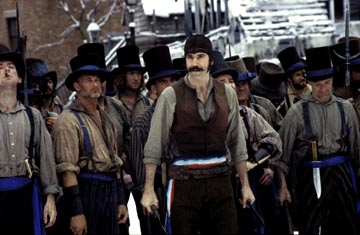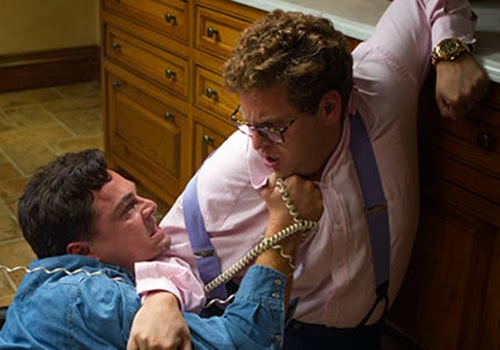The hottest controversy right now surrounds “The Wolf of Wall Street” and whether or not the film makes Jordan Belfort look like a hero or a villain. Okay, maybe this debate is a week old but I don’t get paid to do this so relevance is irrelevant here.
Category Archives: Martin Scorsese
Movie Review: The Wolf of Wall Street
 |
| Image via Slate |
“The Wolf of Wall Street” is the rare film in which its trailer is not misleading. If you came anticipating flying midgets and strippers with money taped to them, that is exactly what you will get.
Although he has dipped his toes into very different territory over the years (“The Aviator,” “Hugo”), Martin Scorsese returns to the world of crime and money again and again. Each time, he seems to have something new to say about it, and gives us another rags to riches villain to engrain into our memories.
Meet Jordan Belfort (Leonardo DiCaprio), a middle class kid from Bayside, Queens who just wants to make millions. His ambition brings him to Wall Street where he meets a broker (Matthew McConaughey) who teaches him how to survive on Wall Street, mainly through increased sex and drug intake.

Through some successes and failures over the next few years, Belfort finds himself in the penny stock business and eventually, he becomes a multimillionaire. He begins to live a life of excess as opposed to luxury. Those with enough money are comfortable. Then there are people like Jordan Belfort, who have more money than they can spend, and thus have wealth-induced anxiety. I hate that I am about to type this, but I feel like I have to: more money really does mean more problems.
Scorsese fights excess with excess. With a running time that just hits the three hour mark, he revels in the insane behavior that took place at Stratton Oakmont and then reprimands it. “The Wolf of Wall Street” embodies the truism that crime doesn’t pay, and it has such a fun time in doing so. “The Wolf of Wall Street” is a comedy, through and through, and by far one of the funniest movies of the year. This is a satire with consequences. It allows its actors to show off comic skills that you knew or didn’t know that they ever had.
Scorsese’s films with DiCaprio has proven to be one of the most successful actor-director collaborations ever, and about as close to the pairing that Scorsese and DeNiro once had. DiCaprio has never had a real comedic role before, which is a shame; he has never been funnier than he is in “The Wolf of Wall Street.” His drug-addled physical commitment to his performance turns Jordan Belfort into the weirdest kind of cartoon – the kind that will slink and slither as much as he needs to so long as it helps him put more money in his pocket. And while DiCaprio could probably make a rock seem charismatic, he has especially good chemistry with Jonah Hill, who plays his sidekick, Donnie Azoff. Many of the scenes are focused on Hill’s ability to bounce off another person in long banter sessions. He is as good with DiCaprio as he has been in past comedies with Michael Cera and Channing Tatum.

“The Wolf of Wall Street” proves that age has nothing on Scorsese. He recently said that he thinks he only has a few films left in him. However, his directorial style is as fresh today as it was when he first started. His view of the world lends itself to so many different times and places. However, it is fantastic to see him back in his home turf. Whether it is the 1860s in Five Points or the 1990s on Wall Street, Scorsese knows New York better than anyone. He captures the neighborhoods, the accents, and the attitudes. His hyperactive directing style lends itself so well to the chaotic energy of the city.
This film has been compared many times to “Goodfellas,” you know, that movie you will watch to completion anytime it is on cable. While the comparison sets “Wolf” up for high expectations, it is a fair one. “Wolf” is filled with criss-crossing perspectives and multiple voiceovers. This is Jordan’s story, and he gets a chance to try and justify himself with the perspective of time. However, allowing the side characters to comment is a sly way to let the audience know that the narrator cannot be trusted.
In the world of “The Wolf of Wall Street,” stockbrokers are the new gangsters: kids aspire to be them, women want to be with them. They see what they want and they take it. However, Henry Hill is something of a sympathetic figure, while Jordan Belfort does not come close to being sympathetic. The fact that the film is able to get this across is part of what makes it so good. While “Goodfellas” showed that gangsters could be average guys who found some short cuts to success, “The Wolf of Wall Street” portrays criminals as reverse Robin Hoods who got rich by ripping off the working class. “Wolf” is really about class warfare. The scene where Belfort and his gang launch little people for their own entertainment struck me as biting, yet sad comedy. It is about the equivalent of the scene in “History of the World: Part I” where King Louis shoots peasants for fun, the same people he is supposed to be looking out for.
Nobody contradicts himself for artistic gain quite as well as Scorsese does. Throughout the film’s run, quaaludes are snorted and orgies are had, and we get to experience the feeling of being involved in all of these. Scorsese has an amazing ability of being able to boil down the business of crime into something understandable. Sure, little pieces could have been trimmed off of the film here and there, but no scene really needed to be removed completely. There is never a boring moment in the film, something that cannot be said for most films that are half the length of “The Wolf of Wall Street.” You will enjoy every moment of what is on screen, and then question why you enjoyed something about a subject so dark. This is provocation done right in one of the best films of the year.
Brain Farts From The Edge (Minor Spoilers/Spoilers For Real Life Ahead)
- Matthew McConaughey is barely in the film, but he still deserves an Oscar nomination. I also like how most directors seem to have given up on trying to get him to drop his Texas accent.
- As Always, Kyle Chandler plays the authority figure. Luckily, he has more of a personality than he did in “Argo” and “Zero Dark Thirty.” Plus, he gets to curse. Go coach!
- The chimp in roller skates needed more screen time. He is as intriguing as the llama they always show backstage on “Saturday Night Live” but never explain.
- Apparently, Belfort’s main influence for his get rich quick scheme was Gordon Gekko of “Wall Street.” This once again proves that people are really, really bad at understanding simple irony.
- The quaalude tripping scene is unbelievable. From the Popeye reference to Belfort’s attempt to gain control of his own body, this is one of the funniest scenes of the year. Like tear-inducing laughter. It’s like a slightly more down-to-earth version of the drug trip sequence from “21 Jump Street.”
- During the drug trip, one very long lasting shot weirdly reminded me of the hanging scene in “12 Years a Slave.” Talk about two very different kinds of struggles.
- Something about this movie really makes me want to go eat in a diner in Queens.
- I immensely enjoyed the scene where Rob Reiner yelled at his wife over the TV show. It is really fun to watch old Jews argue.
- On that note, I don’t know what “The Equalizer” is, but I would totally watch it.
- One scene I could have done without (SPOILERS!): After Naomi (Margot Robbie) tells Jordan she wants a divorce and Jordan tries to steal his own daughter. It felt both unnecessary and painful to watch. At this point, I didn’t need any more evidence that he was selfish and pathetic. This scene just felt like overkill.
- The storm scene. Terrifying. “The Perfect Storm” has nothing on this. (Note: I have never seen “The Perfect Storm,” so it’s probably best to ignore this).
- I really enjoyed that nice little bit of subway symbolism in the end.
- The fact that this escaped an NC-17 rating is beyond me.
- F***ing Benihana.
- Now if you’ll excuse me, I’m gonna go watch “Goodfellas.”

Six Movies You Won’t Want to Miss in December 2013
 |
| Image via Business Insider |
Well, it’s almost Thanksgiving again. And you know what that means: time to start thinking about Christmas!
December is always an exciting movie month. Its when the less explosion-y blockbusters come out, and the small movies that normally wouldn’t get much publicity finally get the spotlight. This looks like a particularly good December that will hopefully make up for some of the more lackluster months of 2013. Come on Hollywood, this is when you get to show everyone that movies are still relevant!
In order to ensure a great holiday season, here are the December releases that I am most excited to see. Join me in the excitement, people. It’s the least you can do since, you know, I can’t celebrate Christmas:
6. The Secret Life of Walter Mitty
As a director, Ben Stiller has become more and more ambitious. “Walter Mitty” looks more serious than funny, and I know that Stiller is up to the task, both in front of and behind the camera. Mostly, this looks like an exciting adventure story that could appeal to just about anybody. There is something about Sean Penn’s weird finger summoning that makes me crack up every time I watch the trailer. However, I will forget I ever saw this, because “Walter Mitty” also stars Adam Scott, who plays a huge d-bag in it. Adam Scott seems like such a nice guy, but he also plays d-bags better than just about anybody else.
5. Her
I am willing to forgive Spike Jonze for “Where the Wild Things Are,” partly because this is the same guy who also directed “Being John Malkovich” and “Adaptation.” Also, “Her” looks so strange yet so fascinating. Joaquin Phoenix falls in love with a computer voiced by Scarlett Johansson? Relevant social commentary? No further questions.
Sure, America didn’t need a sequel to “Anchorman.” But Americans also don’t need most of the things that we have. I would be lying though if I said that I didn’t shriek with excitement the moment I saw the first trailer for “Anchorman 2: The Legend Continues.” To put it simply, “Anchorman” might just be the comedy of my generation; ask just about anybody my age about it and they will immediately start to quote it by heart. “Anchorman” is to the ’00s what “The Jerk” was to the ’70s and “Airplane” was to the ’80s.* Comedy sequels do have a bad habit of getting it wrong. For now, I am confident that “Anchorman 2: The Legend Continues” won’t be anything less than hilarious.
3. The Wolf of Wall Street
Finally, it is safe to say that “The Wolf of Wall Street” will be released in 2013, and will also be eligible for the 2013 Oscars**. More importantly though, I will finally get to see “The Wolf of Wall Street,” which I have been anticipating for months. Here’s a story of Wall Street corruption that will probably be a lot more entertaining (or certainly funnier) than “Wall Street.” I mean, there’s flying midgets and a chimpanzee in roller skates. Reportedly, “The Wolf of Wall Street” is three hours long, which would make it the longest film Martin Scorsese has ever directed. 46 years into his career, and Scorsese still finds ways to top himself.
2. American Hustle
David O. Russell has been on fire lately. His last two films (“The Fighter,” “Silver Linings Playbook”) were wonderful, and it seems like he’s found a batch of performers that just know how to work with him (sorry, Lily Tomlin). The trailer itself, from fat Bradley Cooper to “Good Times Bad Times,” gets me excited enough (even if it’s hidden all evidence that Louis C.K. is also in it). David O. Russell has become one of those directors who is consistently exciting to watch, and his name alone is enough to get me to race over to the nearest theater. Speaking of directors who meet that criteria…
1. Inside Llewyn Davis
Joel and Ethan Coen. That’s about all it takes for me to get excited for a movie. To make it even better, “Inside Llewyn Davis” is about the Greenwich Village folk scene in the 1960s. Then, to make it even even better, this marks yet another collaboration between The Coen Brothers and John Goodman, who haven’t done a movie together in years. If there’s one thing that the Coen Brothers are definitely good at, it’s directing John Goodman in a period piece.
Levon Helm: 1940-2012
After a long battle with cancer, Levon Helm, drummer and singer for The Band, died today. He was 71.
The Band had all the right in the world to carry such a simple name, as quite simply there is no other band like them. Unfortunately, I know less of the inner workings of music than I do of television and film. But when I like music, I just get that inescapable feeling. Of the short playlist of songs the classic rock station I listened to growing up played over and over, “The Weight” is the only one I never tired of.
Imagine my surprise when I finally saw “Easy Rider” and heard this song playing as Hopper and Fonda rode choppers through the American West. Every time I heard that song soon after, I saw desserts and red rocky formations. I saw a chunk of America right there within its verses.
The Band were the main subject of another iconic movie: Martin Scorsese’s rock documentary “The Last Waltz,” which documented The Band’s last concert. Helm has been a huge part of both my film and music education.
We will never have a band quite like The Band again, nor a musician quite like Levon Helm.
Everyone Has to Start Somewhere: Who’s That Knocking at My Door
 |
It is a rarity for even the greatest director to strike gold at the very beginning of their career. Few and far between have broken the amateur barrier (Quentin Tarantino, Sam Mendes, and The Coen Brothers are rare exceptions), but even when they don’t, future greatness can be seen in a scrappy debut effort. “Who’s That Knocking at My Door,” the very first movie made by Martin Scorsese, is not the kind of seamless masterpiece he would late go on to make, but it foreshadows a career steeped in Italian-American culture, New York City, and crushing Catholic guilt.
“Who’s That Knocking at My Door” has all of the signs of a film school effort: blatant symbolism, aimless dialogue, and rough cuts. Indeed, Scorsese began making this movie while he was a student at NYU, and he continued working on it even after he graduated. The then unknown Harvey Keitel stars as J.R., a young Italian-American hoodlum who hangs out with a pretty volatile group of guys, yet that doesn’t stop him from going to church to pay penance.
J.R. is the embodiment of what Scorsese must have been like in those days: he seems to only know what he sees in the movies and what he learns in Church. This basically entails knowledge of every John Wayne movie. To him, “The Searchers” is like another kind of gospel. His dialogue about Wayne is some of the finest, most naturalistic writing in any Scorsese film.
The girl in the movie (Zina Bethune), simply named The Girl, becomes J.R.’s new object of affection, and his love with her ends up testing everything else he holds dear. After their relationship buds, Girl reveals that she was once raped in a chilling flashback sequence that resembles what a filmed version of Joyce Carol Oates’s “Where Are You Going, Where Have You Been?” would look like. As a man loyal to his Catholic background, this makes him question his own faith, and what is really most important to him in his life.
This revelation does not come until very late in this film’s short running time. “Who’s That Knocking at My Door” does not contain the typical kind of plot. Rather than an event inspiring a series of actions that effects everyone, it is instead about an event inspiring a series of emotions that effects just two characters.
“Who’s That Knocking at My Door” might feel inconsistent and messy because it seems less like an attempt to capture a fully realized story on screen but more like someone trying to capture the mixed emotions that make up their life on film. The irony of the sunny, happy-go-lucky music that plays in the credit sequence against footage of a man being beaten shows that this type of aggression was just a way of life where Scorsese grew up. The casual attitude of this scene is still shocking to watch. Meanwhile, playing “Who’s That Knocking?” during the end sequence in the Church as the camera pans around all of the different representations of Jesus makes it feel less like a solemn walk through a holy place and more like a ride at Disney World.
Watching Scorsese’s work on “Who’s That Knocking at My Door” is like watching a diamond in the rough that would soon become one of the f***ing brightest gems in the history of cinema. From it, you can see where the basis of “Mean Streets,” “Taxi Driver,” and “Raging Bull” amongst many others came from. Even “Hugo,” which is about a child who is much more eccentric than J.R. can draw its obsessive conversation about film back to Scorsese’s debut.
Film can be one’s attempt to show what they believe matters most in life and with “Who’s That Knocking at My Door” Scorsese was establishing everything he loves and everything he values. And while his big debut certainly isn’t flawless, we haven’t been able to leave his side since.
Movie Review: Hugo
 Even this late in his career, Martin Scorsese can still reinvent himself, even if it means not changing at all.
Even this late in his career, Martin Scorsese can still reinvent himself, even if it means not changing at all.




That One Shot: Goodfellas
 For me, the tracking shot has always been my favorite camera movement. In our current film culture, which values incessant quick cuts, there is something to be said about being able to keep the camera running for an extended period of time. It is a testament to this that tracking shots are usually the ones people remember, and the one type of shot people are always making lists about.
For me, the tracking shot has always been my favorite camera movement. In our current film culture, which values incessant quick cuts, there is something to be said about being able to keep the camera running for an extended period of time. It is a testament to this that tracking shots are usually the ones people remember, and the one type of shot people are always making lists about.
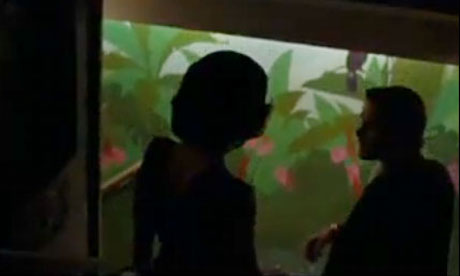
Halfway Through: The Best Films of the First Half of 2010
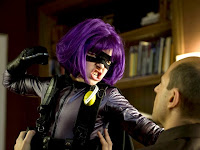 There has been an unreasonably large amount of articles lately chronicling the best films of the first half of 2010. As a journalist, I need to stay relevant. So, why not chime in as well.
There has been an unreasonably large amount of articles lately chronicling the best films of the first half of 2010. As a journalist, I need to stay relevant. So, why not chime in as well.
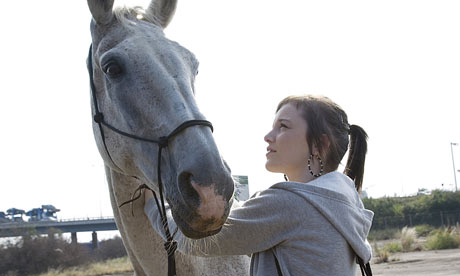

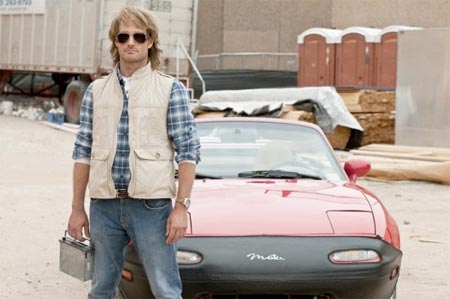


Movie Review: Shutter Island
 Sometimes, the language of film, and the language of literature, just fit together like a puzzle. When I think of great directors and great writers with similar visions, I usually just think of the Coen Brothers and Cormac McCarthy over “No Country for Old Men.” Now, I can add Martin Scorsese and Dennis Lehane, over “Shutter Island.”
Sometimes, the language of film, and the language of literature, just fit together like a puzzle. When I think of great directors and great writers with similar visions, I usually just think of the Coen Brothers and Cormac McCarthy over “No Country for Old Men.” Now, I can add Martin Scorsese and Dennis Lehane, over “Shutter Island.”
Movie Review: Gangs of New York
 Of all of the stunning images from “Gangs of New York,” one that sticks out is a shot that starts off on street level, and continues to go higher and higher until the 19th Century style buildings become the shape of the island of Manhattan. Here is a city that, over the years, I’ve grown to know and love. Here it is, in a form like we’ve never seen before.
Of all of the stunning images from “Gangs of New York,” one that sticks out is a shot that starts off on street level, and continues to go higher and higher until the 19th Century style buildings become the shape of the island of Manhattan. Here is a city that, over the years, I’ve grown to know and love. Here it is, in a form like we’ve never seen before.
